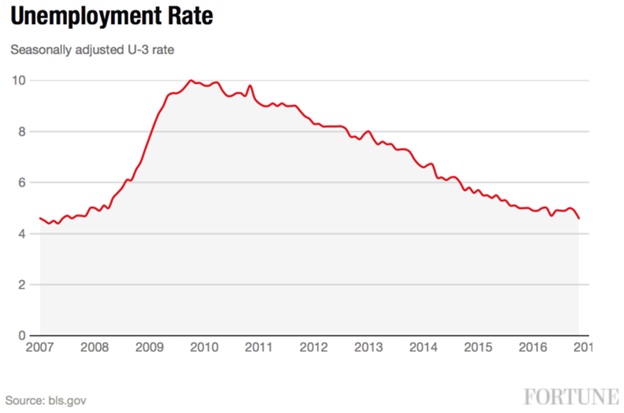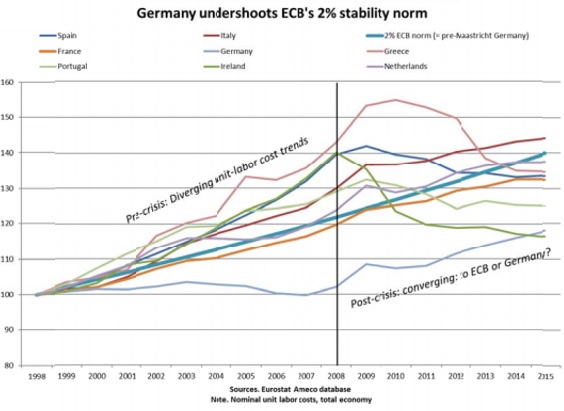Keynesian and Austerity Economic Models
Keynesian and Austerity Economic Models
Within the public debate, the United States is seen as a neoliberal Keynesian model economy while European economies are seen as inflexible and sclerotic austerity model, a sharp contrast of the United States. Both the American economic model and the European economic models have weaknesses and strengths. The strengths of the neoliberal model that is used in the United States include an average rate of unemployment that is lower, an employment-to-population ratio that is higher, and faster output growth which is driven by high population growth resulting from illegal and legal immigration. The weakness of the American neoliberal model in relation to the European model is that the model is causing worsened and higher poverty rates, longer working hours, lower productivity growth, which was witnessed until 1990, wage stagnation as experienced by those falling in the bottom half of the wage distribution (Hiç, 2019). The United States has followed a path of expansion macro policy established on large budget deficits, erosion of social protections, and countercyclical interest rates. The expansionary macroeconomic policy is used for determining the overall rate of unemployment. The policy helps in lowering unemployment. As it tries to lower unemployment, the expansionary macroeconomic policy ends up leading to erosion of institutions of social protection. Once the institutions of social protection have been eroded, income inequality is increased. The result of the 'United States' application of expansionary macroeconomic policy is that it has led to worsening income distribution and full employment. In contrast, Europe has pursued contractionary macroeconomic policies characterized by fiscal austerity and high-interest rates. As the European economies pursue these contractionary macro policies, they maintain institutions of social protection. Because of the application of the contractionary macro policies, European economics have experienced high unemployment as well as only slight progress in income inequality alleviation (Eichengreen, 2020).
The United States applies the Keynesian theory of economy. According to this theory, income distribution is greatly impacted or affected by institutional and social forces. The theory also posits that full employment can be achieved by managing the level of aggregate demand. The macroeconomic policy, therefore, needs to offer adequate aggregate demand without generating unacceptably high inflation. The United States has therefore strengthened its institutions of social protection and labor-market protection, which has led to a lower rate of unemployment in the United States. The application of Keynesian economics after the 2008 financial crisis saw the unemployment rate to drop unexpectedly to 4.6 percent, representing the lowest unemployment rate that has been recorded since August 2007 (Hiç, 2019). The trend in the unemployment rate in the United States are as shown in figure 1 below:
Low unemployment has been responsible for fairer income distribution among electorates. As far as economic happiness is concerned, unemployment is responsible for a very high unhappiness cost. Despite the culture of individualism found in the United States, the role that the government plays in the US market economy runs far deeper. Consequently, the government is responsible for remedying market failure and providing essential services related to health and education. The government also uses monetary and fiscal policy for stabilizing the business cycle. Apart from this, the government is crucial when it comes to the operations of private markets. The government does this by providing a legal system that supports the utilization of contracts. The government also plays the role of preventing destructive competition (Eichengreen, 2020).
Unlike the Keynesian system that the United States applied, Germany applied the neoliberal austerity model. Germany is one of the key European economics. In terms of economic policy, Germany seems to be seriously on the wrong side of macroeconomics. The macroeconomic policy in Germany seems to be boiling down to two things, which are price stability and austerity. Recently, in the midst of a big slum that plagued the Eurozone in recent times, Germany stood at the forefront of those voices that pushed for austerity. Germany’s assertion is that austerity was important in boosting confidence and hence economic growth. As per a widely held assertion, Germans focus more on price stability than any other country in the world. The country fears debt and associates it with guilt and instability. Germany is generally anti-Keynesian, something that has been said to be the root of the euro crisis being experienced today. In the first half of the 20th century, there were extreme currency crises and price level instability in Germany (Keller, 2014).
In 1990, East and West Germany reunited. This reunion led to the establishment of a monetary union between the two former Germanys. The union between East and West Germany resulted in the incorporation of former East Germany into the social systems and federal budget of the west. The East had experienced a loss of millions of jobs, something which left it uncompetitive because of wage convergence. This led to a huge drain on the newly united social and fiscal union. The reunion also led to a joint austerity crusade which unfortunately did not help. Germany experienced high unemployment and stagnation which reflected its lack of competitiveness. This made the country to set out in 1996 to restore its competitiveness. This led to a rise in Germany’s trade surpluses in relation to its euro partners which were experiencing rising trade deficits (Truger, 2013).
When the global financial crisis started in the US subprime mortgage market segment, the eurozone immediately faced a banking crisis. At the same time, imbalances and homegrown bubbles imploded in the eurozone. Consequently, in 2009, Germany experienced a brief moment of Keynesianism. The country applied a spontaneous Keynesian policy as a move for countering the global crisis and stimulating domestic demand. The federal election that the country was having in 2009 probably helped. The country then applied an effective and sizeable fiscal stimulus in 2009 -2010, causing the country to experience a brisk recovery from the global crisis. The Keynesian model was short-lived because the country then experienced a quick return to unconditional austerity because this was alleged as the unavoidable solution to what was described as a sovereign debt crisis (Keller, 2014). When the global crisis hit Europe, Europe’s Monetary Union, which was supposed to be a stability union, found itself ill-equipped to face. It is said that Germany’s anti-Keynesianism is responsible for bringing Europe to its knees during the global crisis. Before Germany brought its euro partners to its knees, it was using policies that made Germany itself sick. The policies earned the country the title of “sick man of the euro. The country has employed mindless fiscal austerity since 1992 and this policy undermined recovery as well as domestic demand in Germany. In 1996, Germany added wage moderation to the mix, and this worsened domestic demand (Keller, 2014).

Figure 1
In figure 1 above, under the euro, German wages have ceased growing and at the same time, private consumption also ceased growing. These two factors undermined private investment in Germany.
Neoliberal austerity measures have been applied in Italy. Currently, the country has a huge national debt which is amounting to 131.8 percent of the country’s GDP. The unemployment rate in Italy is also soaring at 11.2 percent and the country further records the slowest growth rates in the eurozone (Cozzolino, 2020). All these came after the European Union mandated austerity measures since the start of the decade and courtesy of the fact that Italy is a member of the European Union, it applied the austerity measures. The austerity measures, unfortunately, failed to tackle the country’s longtime structural problems. The country had few economic tools that could help it in jump-starting its economy after it agreed to follow the EU monetary guidance of the euro-zone countries. The aim of the E.U. monetary guidance was that of stabilizing the currency for all the members of the euro-zone. The country still has a duty to severely cut its public debt and budget deficit if it has to avoid huge economic sanctions and respect the European guidelines. The country’s lagging economy is causing tensions to rise between the European Union leadership and Italy. This has resulted in a sudden shift in public opinion in Italy. Italians no longer want to live under the strict fiscal rules of the European Union (Engler & Klein, 2017).
The post-crisis fiscal austerity in Italy shows that the country’s expenditure on social protection per person relative to France and Euro-4 between 1995 and 2018 shows a declining trend as shown in figure 2 below. Social protection in this case represents the largest item of government expenditure in European Union member states. Some of the social protections in Italy include social housing payments, unemployment benefits, transfers to children and families, social insurance for disability and sickness, and old age pensions (Cozzolino, 2020).

Figure 2
References:
Cozzolino, A. (2020). The discursive construction of Europe in Italy in the age of permanent austerity. JCMS: Journal of Common Market Studies, 58(3), 580-598.
Eichengreen, B. (2020). Keynesian economics: can it return if it never died?. Review of Keynesian Economics, 8(1), 23-35.
Engler, P., & Klein, M. (2017). Austerity measures amplified the crisis in Spain, Portugal, and Italy. DIW Economic Bulletin, 7(8), 89-93.
Hiç, Ö. (2019). Evolution of New Keynesian Economics. Procedia Computer Science, 158, 1025-1032.
Keller, B. (2014). The continuation of early austerity measures: the special case of Germany. Transfer: European review of labor and research, 20(3), 387-402.
Truger, A. (2013). Austerity in the euro area: the sad state of economic policy in Germany and the EU. European Journal of Economics and Economic Policies: Intervention, 10(2), 158-174.
Resources
- 24 x 7 Availability.
- Trained and Certified Experts.
- Deadline Guaranteed.
- Plagiarism Free.
- Privacy Guaranteed.
- Free download.
- Online help for all project.
- Homework Help Services

